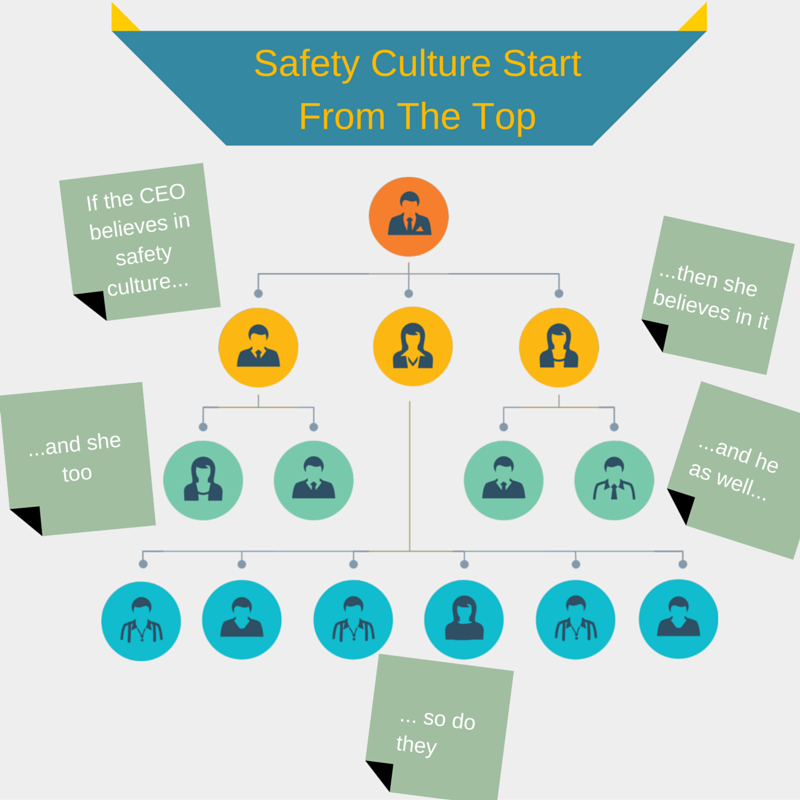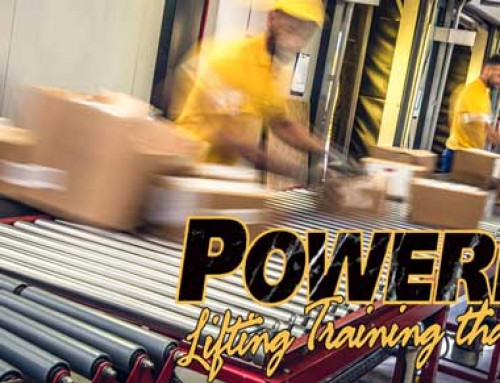Does Your Company Have a Safety Culture?
This is a question all managers and executives need to ask themselves and then honestly evaluate their organization. Why is this so important?
Well the most obvious reasons are as follows:
A safe work culture provides……
✓ Lower Worker Comp costs
✓ Lower insurance premiums
✓ Increased employee retention
✓ More engaged workforce
✓ Better recruiting
✓ No OSHA audits or fines
✓ Fewer lost work days
✓ And many more
So what does a “safety culture” mean? It really comes down to attitude and it starts at the top. If the CEO believes in it and executives embrace it and managers empower it and supervisors demonstrate it then the rest of the employees will make it happen. That is when it becomes part of your culture. But if any one of the links in the chain is broken by lack of support then the entire safety culture is at risk of failing.
Here is an example to consider…
Becker Industries trains its new forklift operators with the minimum required OSHA training, they have safety banners hung up and they talk about safety at the monthly meetings. But a quick walk through the plant and you see forklift operators exiting aisles without slowing or honking, carrying loads in front of them that obstruct their view, driving too fast for conditions and some trucks have broken warning lights.
Does Becker Industries have a safety culture? Of course not. But why not? It comes down to commitment and the management is not committed to safety, otherwise the supervisors would stop and coach when seeing unsafe practices, managers would discipline those that continue operating unsafely and executives would insist that safety devices are repaired. If all that happened then employees would start to recognize that Becker cares about their safety and would begin using safe practices.
Another way a safety culture is embedded in an organization is through safety training. Since training is always the starting point of any new program it makes sense that safety training is how a great safety program should begin. So what does an outstanding safety program look like? Well, it starts on an employees’ first day and never stops as long as they work there.
Here is an example…
-
- Stuart is a new employee at Excelsior and in his first morning he is introduced to the company’s safety policy by taking an online course that explains the safety culture, why it is important and what the expectations are for all employees. It includes a brief video from the CEO explaining his personal commitment to the safety of all employees. That makes an impression.
- During Stuart’s first afternoon he takes an online course for forklift certification that was professionally produced by the company who makes the forklift he will be driving. He takes a detailed, online test that ensures he understands the safe operation of the truck. He also has hands-on training with the certified trainer. This is not a quick overview but an in-depth orientation on the vehicle’s controls as well as significant time where Stuart must demonstrate his ability to safely operate the truck. Although the training was hands-on, the results are recorded electronically along with his online test results.
- On day two Stuart takes two important online courses. “Haz-Mat Safety in the Plant” and “Lock Out/Tag Out Procedures”. These courses explain the Haz Mat material stored in the plant, outlines safety procedures, SDS locations (safety data sheet), what to do in an emergency as well as how to properly lock out equipment suspected of being defective. This was 20 minutes well spent and Stuart’s 100% score on the quizzes is recorded electronically and he receives a certificate showing his perfect score that really impresses his son that evening.
- On day three a supervisor notices Stuart exits an aisle on his forklift without slowing or honking. The supervisor immediately stops him and reminds him of the lift truck safety training and why it is important to follow the rules and what might have happened if a pedestrian was walking in his path.
- Later that day Stuart completes an online course on proper lifting and bending that explains and demonstrates why improper lifting is so harmful and how the effects last long after he stops working. The course has many videos and graphics that show, using actual footage from the plant, the mechanics of the body and how improper lifting puts excess strain on critical points. The course has hands-on activities that Stuart must complete to reinforce proper techniques. At the end is a short video segment by the HR Manager explaining her commitment to safety and encouraging everyone to be observant and quickly report all unsafe conditions.
- Later that week Stuart witnesses an employee driving a lift truck with an obstructed view because of an unusually tall load. He also sees a supervisor immediately stop the employee and explain the danger of his actions and then helps him correct the tall load so he can drive safely.
Day five has Stuart taking a course online that explains how Excelsior is so committed to safety that it authorizes any employee to stop the work of any other person if they feel it is unsafe. This cutting edge policy is empowering and sends a clear message to Stuart that Excelsior values safety above productivity. The training provides several video-based examples from their own plant on how this “stop and work safely” initiative is put into practice. - On day seven Stuart sees a dock plate that appears to have a slight weld crack. He is not sure but reports it to his supervisor anyway. The supervisor immediately initiates Excelsior’s “lock out/tag out” procedure and calls for service. The dock plate is found to be defective and repaired within 2 days. At the monthly safety-meeting Stuart is recognized publicly for his quick recognition of a dangerous situation and prompt reporting.
- Stuart’s training continues for weeks with additional online courses every couple days designed to explain safety procedures, describe unsafe conditions, training on what to do in an emergency, how to stop unsafe practices and how to safely operate new equipment. He is extremely impressed with the company’s commitment to safety and the effort spent on educating him and keeping him safe. No other company has ever done this for him.
Do you get the feeling that Excelsior has a “safety culture”? It is a multi-faceted approach from executive management support to positive recognition to quick corrective action, all supported with a strong training program.
Excelsior’s online training programs are the foundation of their safety culture.
The knowledge and examples learned in training set the standard and expectations for all employees.
Your company can also have a world-class safety culture and it starts with training.



